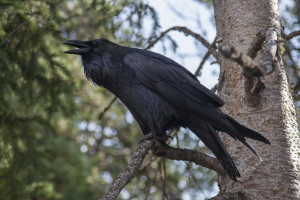
Germany shocked the law enforcement world in 2010 with an ingenious idea: Why not use turkey vultures to search for dead bodies in murder investigations? Turkey vultures hunt with their sense of smell and scientists say they’re the best sniffers among the raptors. They’re naturally attracted to carrion. They can detect a dead mouse from a mile away and aren’t hindered by rough terrain. Could they be trained to distinguish human from animal bodies, be fitted with GPS devices, and help law enforcement solve cases?
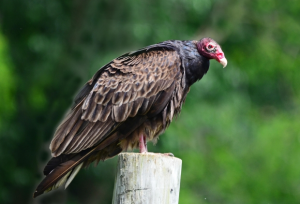
As great as the idea was, it met its demise in the sharp talons of the vulture’s biology. Vultures aren’t sociable. They’re all beaks and claws. They use projectile vomiting to defend themselves, spewing the rancid, corrosive mess up to ten feet. The German researchers couldn’t get them to cooperate and the project was quickly abandoned.
Should Germany have looked at ravens instead?
It’s not that vultures can’t be useful on cadaver searches. Cadaver dog handler Cat Warren admits to keeping an eye on turkey vulture kettles during her searches. But other wild birds offer clues, too. Hanns Gross, the Austrian father of criminology, kept his eye on European vultures and kites, but also on a different carrion-eating genus: the corvids. Ravens and crows. Here’s an example from his 19th century handbook on criminology:
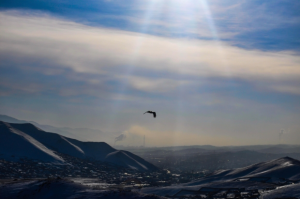
“The body of a murdered woman was once found in the following way: The teachers of the surrounding schools told the children to let them know if they noticed a flock of many crows, ravens, etc., anywhere; some of them made such a report, with the successful result that the murdered person was found.”
I say the Germans were experimenting with the wrong bird species. Shall we take a closer look at the raven?
Ravens are sociable and super smart
Scientists consider corvids the most intelligent birds. They’ve even documented corvids using tools. They’re trainable. A big plus is that they’re affable to humans.
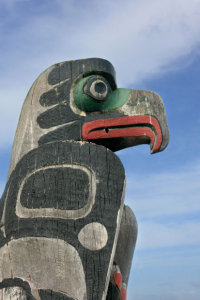
It’s no accident that the raven plays such a prominent role in Norse and American Indian mythology. Ornithologist Bernd Heinrich devotes three chapters in his book, Mind of the Raven, to the raven’s cooperation with other hunters: wolves, polar bears, cats, and humans. There are anecdotes of ravens spotting prey and leading predators to it. Ravens probably learned that large prey, in combination with a hunter, translated into food. As a reward, the ravens got a chance at the leftovers.
In fact, man’s first best friend might not have been the dog. It could have been the raven.
A corvid, canine, and homo sapiens hunting triad?
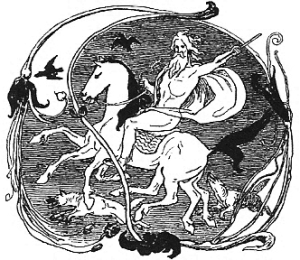
It may not be an accident, either, that the Norse god Odin took two ravens and two wolves with him on the hunt.
In order to track down the bases for raven mythology, modern anecdotes of interspecies hunting cooperation, and rumors that Eskimo hunters “talk” to ravens, Bernd Heinrich traveled to Inuit villages on the Canadian tundra. He found ravens everywhere, often in close association with the Eskimo dogs.
The Inuit told stories of hunters’ ability to communicate with overflying ravens in bygone times. They used incantations and called out the raven’s name, “tulugaq!” Ravens, they said, indicated the direction of the prey by wing tipping. “And after [the hunters] killed the caribou or the polar bear,” said one elderly Inuit, “they always left the raven the choicest tidbits of meat as a reward.” It wasn’t always the faithful dog, then, that accompanied the ancient hunter. The raven may have been there too.
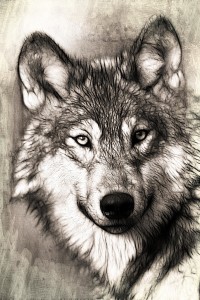
Where they don’t have humans to help them, ravens are just as happy to work with canines. Research from Yellowstone National Park indicates that ravens are dependent on wolves to kill and open carcasses for them. Heinrich says that points to a relationship with an ancient evolutionary history.
Given that ravens also eat carrion and can spot it from the air, could they be trained to search for human bodies and work in cooperation with cadaver dogs and their handlers? Humans and canines are, after all, two of the raven’s traditional partners.
It’s an idea worth exploring. And it’s a more pleasant one than working with vultures.
Literature on point:
Cat Warren, What the Dog Knows: Scent, Science, and the Amazing Ways Dogs Perceive the World (New York: Simon & Schuster, 2013)
Bernd Heinrich: Mind of the Raven: Investigations and Adventures with Wolf-Birds (New York, Harper Collins, 1999). The quote appears on p. 252 of the Harper Perennial paperback edition.
Hanns Gross, Handbuch für Untersuchungsrichter (3rd ed., Graz: Leuschner & Lubensky’s 1899) p.124.

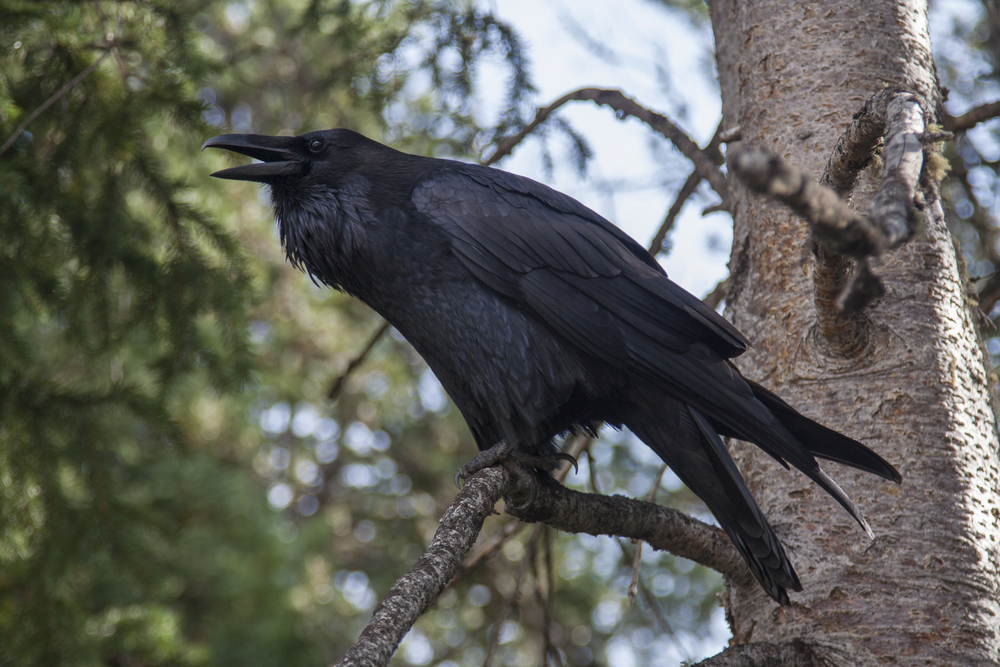



Can ravens be trained to find a body – and then refrain from snacking on it?
Good question. Maybe not, although it would be easier to train a raven than a vulture. The same question came up in Germany when it started training vultures, and the feeling was that even though the vultures might end up disturbing the evidence, it would still be a gain for law enforcement to find the body as opposed to not finding it at all.
Ravens and crows are sacred to Tibetans. Traditional Tibetans and Mongolians practice sky burial and put dead bodies out to be eaten by scavengers. A little strange to many, but it’s a way to benefit other living beings, particularly vultures and crows.
Thanks for teaching me something about the relationship of ravens and crows with hunting species. Makes so much sense. If there is a roadkill around here, crows show up more often than turkey vultures who seem less willing to hang out in clear view of humans.
I didn’t know about corvids being sacred to Tibetans, Elaine, so thanks for teaching something to me. It’s interesting how often the raven appears in the mythology of various cultures, and I suspect it’s due its hunting relationship to man, a relationship largely forgotten today.
Fascinating post. Ravens? An idea for the UK? Not sure folk would be keen on introducing vultures here!
Thanks, Judith! Ravens are so much more pleasant than vultures, aren’t they?
I didn’t know that about the vultures vomiting! Eek! I was fascinated with them as they were plentiful on the California coast. Glad I didn’t get too close. Also a cool story about a raven I saw in a zoo—he would regularly bring leaves and other trash to the fence and poke it through. I didn’t know why until my friend offered a zoo program in return. The raven dropped the leaf and ran off with the program, to later shred it to pieces in the back of the cage. He looked thrilled. Nothing like birds learning to barter!
I love your raven story, Colleen. They are such smart birds. If the nesting material looks better on the other side of the cage, I guess they know how to barter for it!
Interesting subject, but the picture of the First Nations pole at the beginning of the article is that of an eagle, not a raven. Definitely more research needed.
Thanks for pointing that out, Fern. The photo database where I found it categorized it as a raven, but it looks like it could be either. Could you recommend an online source for differentiating eagles and ravens in Pacific Northwest Native American art? Even if this is the wrong bird species depicted in the totem pole, the fact still remains that the the raven plays a prominent role in Native American mythology.
That was fascinating! The ‘Mind of the Raven’ is one of my favourite books! Our three ravens all had very intense and complex relationships with the dogs. Harry, would mercilessly tease them but would sit contentedly next to our Jack Russell bitch Lily. He would get into screeching battles with her, rolling down the slope of our lawn. Both seem evenly matched and although we used to pile in to separate them there never was a crisis. I would say he considered himself a higher order of pack member.
What fascinating experiences you’ve had, Karen, with both ravens and dogs as pets! “Mind of the Raven” is such a good book. A magazine once asked me to write an article about the author, the biology professor Bernd Heinrich, so I had the chance to interview him on the phone. During that interview he told me the raven, not the dog, might have been man’s first friend. It’s an intriguing idea to ponder.
[…] Ravens as Partners for Cadaver Dogs? Ravens, according to biologists, have a symbiotic hunting relationship with both humans and […]
This was a great post Ann Marie! It never occurred to me before, that Odin’s wolves and ravens would have a relationship with each other as well. Though it should have, knowing this happens in nature and being familiar with the stories of his familiars.
So very often, folklore has a basis in fact. I wouldn’t be surprised if the Scandinavians noticed some kind of dynamic between ravens and wolves and worked it into their folkore. Thanks for commenting, Shannon!
I am impressed Ann Marie, I am currently writing an article on this topic regarding Search and Rescue specialists observing nature when looking for missing persons. In wilderness or bush conditions in some countries the raven is the most frequent bird visitor to a cadaver or animal carcass. There is a whole host of scientific research on bird and other scavenger behaviour on human remains, however, I was looking for some indigenous and historic content and I found your blog. Well done..
Thank you, Valentine! Your comment just made my day.